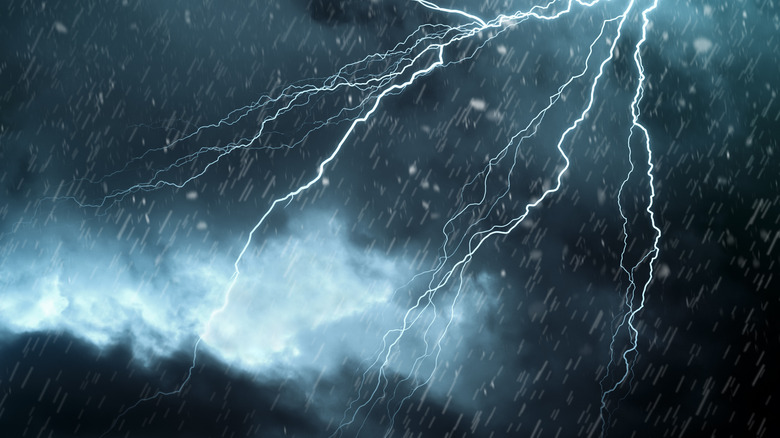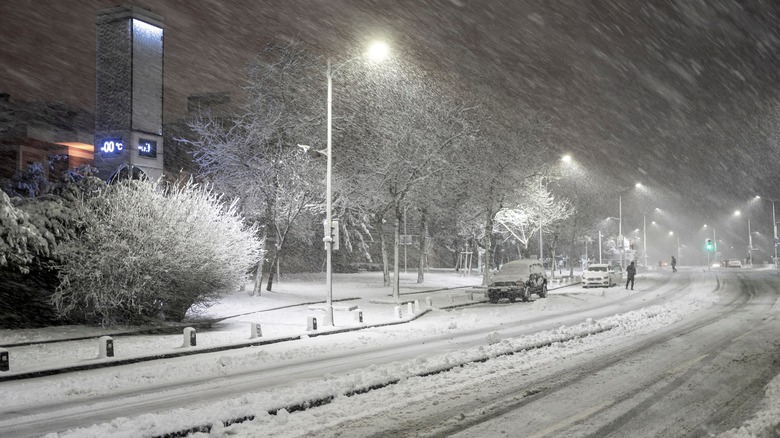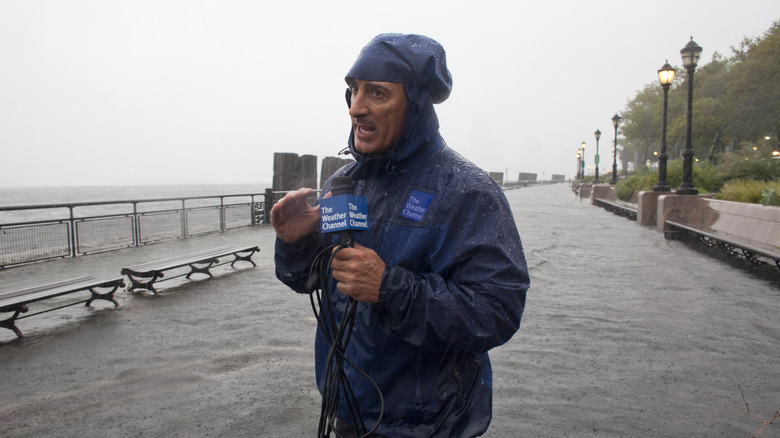What Is Thundersnow And How Rare Is It?
Winter will be arriving soon in the Northern Hemisphere (scientifically speaking, it begins with the winter solstice on December 21, per Almanac), and already parts of the country like Buffalo, New York, are experiencing winter weather in mid-autumn (via AccuWeather).
The most typical manifestation of winter weather has to be the snow. It's certainly the most abundant and most visible, and it certainly has the most potential to disrupt traffic, school schedules, and day-to-day life. On somewhat rare occasions, snow can fall so hard that it produces thunder.
The same weather systems that produce precipitation in the form of rain also produce snow, and so the basic ingredients to produce thunder are in the mix. However, thunder and lightning require heat, which is generally in short supply in the winter, and in some circumstances, under the right conditions, a winter weather system that produces snow can also produce thunder and lightning.
What causes thundersnow?
The process that creates lightning involves warm air rising against a dome of cold air, according to the U.K.'s Met Office, which deals with matters meteorological. As frozen water droplets move within a cloud, they create an electrical charge that builds up until it's released, via lightning. The lightning strike rapidly heats the air, and the rapid expansion causes thunder.
A key ingredient in this stew is heat which is generally absent in the winter. However, there are exceptions. In the Great Lakes region, winds blowing across the warmer waters of the lakes can bring warmer air to a weather system. Similarly, a Nor'easter blowing in off of the Atlantic Ocean can bring warm air into a weather system bedeviling the eastern seaboard, according to Farmers' Almanac. The result of all of this is that some winter storm systems also include enough warm air that thunder and lightning can occur.
How rare is thundersnow?
So how rare is thundersnow? Rare enough that Weather Channel meteorologist Jim Cantore (above) has become famous for absolutely losing it whenever he experiences it (via YouTube).
It's not quite common while not being exceptionally rare. At least, not in places where it can be expected to happen somewhat routinely, including the Great Lakes region and the Northeast. According to the Royal Meteorological Society, .07% of snowstorms in the United States produce thundersnow. According to KMIZ, that translates to 6.3 thundersnow events occurring annually in the United States.
Over the decades, some thundersnow events have been truly impressive. For example, in 1966, according to Farmers' Almanac, a storm in the Northeast produced so much thunder and lightning that weather historian David Ludlum named it the "Donner and Blitzen Storm" — donner and blitzen being the German words for thunder and lightning. Similarly, according to the National Weather Service, a severe 1982 storm that crippled St. Louis brought with it a five-hour period of intense thundersnow.


